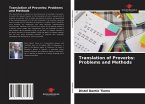Introduction: Language is a part of the process of life, and we use it to communicate with one another. It is a means of representing knowledge and it has a communicative function, namely, communicating information. Knowles (1998: 103) states that communicating means making something common property between two or more interlocutors, and the process of communicating is simple if the addressee already has the information on offer and needs only to activate it by retrieving it from memory in accordance with some sort of clue.The basic function of ellipsis is then, to create cohesion by leaving out, under definite rules, what can be taken over from the preceding discourse, and it is one of the cohesive devices which enables the sentences in a text to hang together into a cohesive whole. Ellipsis , therefore, is the representation of a semantic and lexicogrammatical relation across the adjacent sentences in a text.
Bitte wählen Sie Ihr Anliegen aus.
Rechnungen
Retourenschein anfordern
Bestellstatus
Storno








